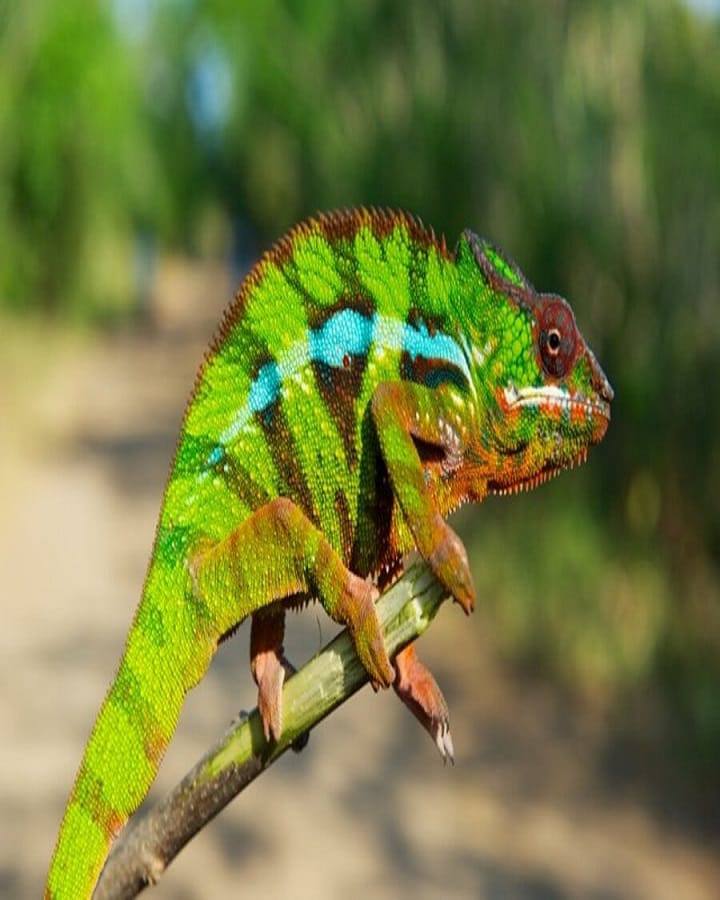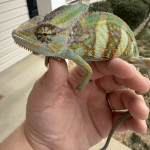
Image Credit – Hema
The Panther chameleon is one of the most stunning reptiles in the world, known for its vibrant colors and remarkable ability to change shades. Found mainly in Madagascar, this unique lizard has become a favorite among wildlife enthusiasts. Unfortunately, the Panther chameleon is endangered due to habitat loss, deforestation, and the illegal pet trade. These challenges threaten not only the species but also the delicate balance of Madagascar’s ecosystem. Understanding why the Panther chameleon is endangered and what can be done to protect it is crucial for ensuring its survival.
Panther Chameleon Is Endangered: The Shocking Truth You Need to Know

Why Is the Panther Chameleon Endangered?
The Panther chameleon is endangered primarily due to habitat loss caused by deforestation, agriculture, and urban expansion in Madagascar. As forests disappear, these reptiles lose the shelter, food sources, and breeding grounds they rely on. Another major threat is the illegal pet trade, where Panther chameleons are captured and sold worldwide for their vibrant colors, reducing wild populations. Climate change also adds pressure by altering their natural environment. With these combined threats, their numbers are declining rapidly. Protecting habitats, enforcing trade regulations, and raising awareness are essential steps to prevent further loss and ensure the Panther chameleon’s survival.
Conservation Efforts
Conservationists are working hard to protect the Panther chameleon through breeding programs, habitat preservation, and awareness campaigns. Local communities are being educated on the importance of protecting wildlife, while international organizations are pushing for stricter regulations against illegal trade.
Why Protecting the Panther Chameleon Matters
Protecting the Panther chameleon matters because this species plays a vital role in maintaining ecological balance by controlling insect populations. Its presence supports the health of Madagascar’s unique ecosystems, which host countless other rare plants and animals. Beyond its ecological importance, the Panther chameleon is admired worldwide for its dazzling colors, making it a symbol of biodiversity’s beauty. Allowing this reptile to vanish would mean losing not only a fascinating creature but also a part of Madagascar’s cultural and natural heritage. Safeguarding the panther chameleon helps preserve biodiversity, protect ecosystems, and ensure future generations can admire its remarkable beauty.
The Panther chameleon is endangered, and immediate action is needed to protect this spectacular reptile from extinction. By supporting conservation efforts, raising awareness, and discouraging the illegal pet trade, we can help secure a brighter future for these colorful creatures. Let us know in the comments what steps you think can be taken to save the Panther chameleon and why protecting endangered species is important to you.
Frequently Asked Questions
Why is the Panther chameleon endangered?
The Panther chameleon is endangered because of rapid habitat loss in Madagascar caused by deforestation, farming, and urban expansion. Additionally, the illegal pet trade has led to a drastic decline in their wild population. Climate change and reduced forest cover further threaten their survival, making conservation efforts urgently necessary.
What efforts are being made to save the endangered Panther chameleon?
To save the endangered Panther chameleon, conservationists are protecting Madagascar’s forests, establishing breeding programs, and promoting sustainable land use. International wildlife laws regulate trade to reduce illegal capture. Awareness campaigns educate local communities about the importance of preserving this species. Collaboration between governments, NGOs, and researchers is vital to ensure the long-term survival of the Panther chameleon.
How can we help protect the Panther chameleon from extinction?
We can help protect the Panther chameleon from extinction by supporting conservation organizations, avoiding the purchase of illegally traded exotic pets, and spreading awareness about their endangered status. Encouraging sustainable practices, donating to wildlife programs, and promoting habitat preservation in Madagascar are key steps to ensure the species’ long-term survival.







